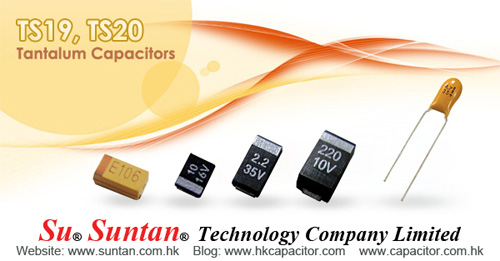Suntan Ceramic Capacitors Insulation Resistance
Suntan Technology Company Limited
---All Kinds of Capacitors
Effect of Frequency: Frequency affects both capacitance and dissipation factor..
The variation of impedance with frequency is an important consideration in the application of multilayer ceramic capacitors. Total impedance of the capacitor is the vector of the capacitive reactance, the inductive reactance, and the ESR. As frequency increases, the capacitive reactance decreases. However, the series inductance (L) produces inductive reactance, which increases with frequency. At some frequency, the impedance ceases to be capacitive and becomes inductive. This point, at the bottom of the V-shaped impedance versus frequency curves, is the self-resonant frequency. At the self-resonant frequency, the reactance is zero, and the impedance consists of the ESR only.


